|
Chapter 11
Eddie Horton and the
First Methodist Church
|
|
“A theater organ is being brought to the church by S-W Music Co.”
A typical conclusion from the above story would be simple:
“An old-time musician brought in an organ to play to the silent version of The Gold Rush. Isn’t that nice?”
A conclusion like that makes me want to scream and bang my head against the wall, because the story isn’t that simple.
The story is mind-boggling and it leaves me entirely flabbergasted and mystified.
Why, you ask?
All right, all right, all right.
Allow me to explain.
|
When I talk about organs, almost nobody has any idea what I’m talking about.
I am not talking about the little organ you have in your living room.
I am not talking about the organ at your church.
I am talking about THIS:
|
|
Click on that image to watch the video.
And if you don’t watch that video all the way through,
then I never want to talk with you again.
The organ is not merely the console, anymore than a car is merely the driving wheel.
The console is just, effectively, a bunch of switches.
The organ is a gigantic blower in the basement,
a gigantic electrical room in the basement,
probably a few hundred miles of wires spread through much of the building, and
massive amounts of pipes and automatic instruments in gigantic chambers flanking the stage.
You can’t just rent an organ, wheel it in for a show, and wheel it out again.
|
|
A ha!
I learned the answer!
It was not a real theatre organ at the First Methodist that night.
No no no no no.
It was an “Allen Custom Theatre Organ,”
a tiny electronic synthesizer, a single unit the size of a console, wired to a pair of speakers.
It was programmed to sound like a real theatre organ.
Of course, nothing in the world sounds remotely like a real theatre organ except for a real theatre organ.
If you’ve never heard a real theatre organ, you haven’t lived.
You feel it more than hear it, it’s like nothing you’ve ever imagined, and no recording could possibly do it justice.
I love attending a cinema to hear an organ accompany a silent movie.
I absolutely detest watching a video of a silent movie accompanied by an organ.
The recording inevitably sounds dreadful and ugly, nothing at all like the real thing.
|
|
How do I know it was an Allen Custom Theatre Organ?
Easy!
There was a repeat performance four months later, with an organ supplied by S-W Music Co.,
and the advertisement specified what the instrument was:
|
|
And here’s a little something about Edward Buggy Horton (7 April 1893, Grand Island NE – 1 June 1977, Albuquerque NM):
|
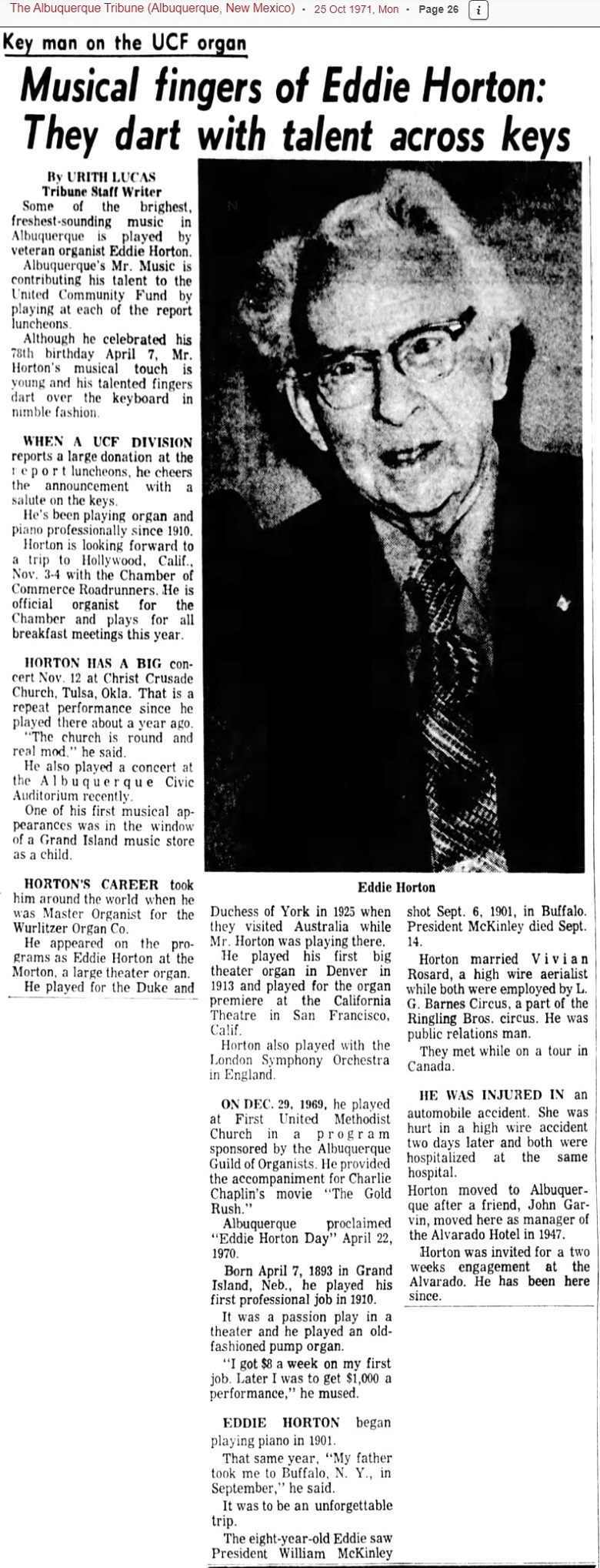
We lived in the same city at the same time.
Had I known, I would have rung him up and hung out with him.
But I never even knew about him.
Darn it! Darn it! Darn it!
|
|
By the way, when it comes to the accompanists at Albuquerque’s theatres and cinemas
from the 1880’s through the 1930’s, there is no collective memory at all.
There is only collective amnesia.
|
All right. That much of the mystery is solved.
Now we get to the next problem:
Where did the Albuquerque chapter of the American Guild of Organists get a print of The Gold Rush?
Where did the Civic Auditorium get a print of The Gold Rush four months afterwards?
The film was not in release.
Charlie Chaplin had converted The Gold Rush into a sound film.
He completely controlled the movie and he adamantly refused to allow the silent version to be seen anymore, by anybody, for any reason.
As a matter of fact, he went so far as to
destroy many of the original materials in order to make exhibition of the silent version impossible.
So how on earth did the silent version get shown in Albuquerque in 1969?
As far as most people knew, the silent version no longer existed.
The story gets really confusing, and I have yet to unravel more than a little bit of it. Ready?
|
History Lesson: Charlie issued The Gold Rush in 1925.
He and Carli Elinor compiled
a music score for the 1925 release, which still exists
and was even performed by an accompanying orchestra at least once sometime in the 1990’s, I think.
Wish I could have been there.
I would love to hear that score played by an orchestra! Oh well.
(The movie played at the Sunshine for five days, from
25 October 1925 through
29 October 1925,
accompanied on the Hillgreen-Lane organ by William Henry Schreiber [5 Feb 1882 – Nov 1964], by the way.)
Anyway, by 1931 the film was withdrawn, or at least it was no longer being booked. It was effectively gone.
|
Charlie then revised the film heavily.
He shortened it, altered Georgia Hale’s character, and simplified the plot.
He deleted the titles and added narration and music.
The addition of narration and music necessitated speeding up the film.
The narration and music also necessitated the loss of 10% of the left side of the image to make way for the soundtrack.
He issued this new version in 1942.
(It played at the Sunshine for four days, from
26 July 1942 through
29 June 1942,
and then at the Lobo on
9 January 1943,
and then at the Mesa on
11 February 1943 and
12 February 1943.)
Within about five years this new version was gone, too.
Whether it was withdrawn or whether it simply was no longer being booked, I do not know.
|
Charlie reissued the 1942 version in 1956, but, predictably, distributors in the US did not leap at the opportunity to place bids.
The reason was probably that no US distributor wanted to touch it so soon after the McCarthy years, but I do not know for certain.
Nonetheless, beginning in 1958,
The Gold Rush was back on US screens.
It was not an authorized release.
We know for certain that
bootleggers were making significant revenue on pirated copies of Charlie’s movies.
Was this release from the usual gang of pirates?
First, let us look at this mini-announcement:
|
|
Take a look at some display ads.
They advertise the sound version.
Was this the 1942 edition?
It was not.
As we discover from David Gill’s article in the October 1995 edition of
Griffithiana: la rivista della Cineteca del Friuli, Journal of Film History vol. 18 no. 54,
the “sound” was an organ accompaniment.
The left side of the image was lopped off to make room for that organ track.
This was Ray Rohauer’s unauthorized reconstruction, built partly from outtakes.
So, who was the organist?
That is nowhere mentioned, but I bet it was either John Muri or Lee Erwin.
Even not knowing any of that, the ads might have made you suspicious:
|
|
See the parenthetical note: “(Not available for exhibition or distribution in Va., Md., Penna. or N. Y.)”
Well, if it’s not available in Pennsylvania, then how do we explain the advertisement below?
|
|
Do you see all the problems with this display advertisement?
The graphic is unrelated to the film and it is not from Chaplin’s press materials.
Official releases gave the name as Charles, not Charlie.
We also see a slightly different parenthetical remark: “(Not available for exhibition or distribution in Md., Va., N. Y. or Mass.)”
If it was not permitted in Maryland, then how do we explain the advertisement below?
|
The Gold Rush was also in
Detroit at the Clawson Playhouse, in
Cleveland at the New Mayfield Art, and probably in other places, too.
My conclusion: The distributor was not authorized to distribute this film.
Further, it seems that there was only a single print.
|
Incidentally, the above three cinemas, the Stanton in Washington DC, the Ambassador in Philadelphia, and the Cameo in Baltimore,
were all run by
Robert B. Fischer of Artistic Films, Inc.
Apparently, this was the distributor, and it
claimed to have distribution rights also to
City Lights,
Modern Times,
The Great Dictator, and
Monsieur Verdoux.
Charlie had none of those films in release in the US at the time.
How do they get away with these things?
I’d love to learn more about this story, yes indeed.
|
Also, there were a few stray prints of Chaplin movies, and how they escaped into the wild, I do not know.
It happens, though.
One way it could happen was for a lab technician to run an order for, say, 150 prints of a movie.
Then, late at night when no one’s looking, he runs off a 151st and makes a notation that a print was faulty and was recycled.
He then sells the extra print to a collector.
Easy way to make some pocket change.
That occasionally happened.
Did it happen with The Gold Rush? I don’t know.
An actor by the name of James Dukas, who was obsessed by Chaplin’s works, devoted much of his life to collecting these stray prints.
Among the prints he managed to snag was The Gold Rush,
though when he acquired it and from whence and which edition it was and how complete it was, I do not know.
I suppose it was the 1942 version.
(See Whitney Bolton, “Best of Broadway,” The Philadelphia Inquirer, Friday, 9 June 1967, p. 23.)
What I do know is that this story proves that stray prints, and possibly even pirated prints,
of The Gold Rush were indeed floating about and could have been shown at cinemas,
albeit illegally.
|
Some lobby cards on eBay (beyond my budget) indicate that Lopert Films, Inc., reissued the 1942 version in the US in 1959.
Here is a one-sheet poster of this 1959 reissue of the 1942 version.
Lopert had just been gobbled up by United Artists, which had originally distributed The Gold Rush in 1925 and again in 1942.
Whenever United Artists did not want to get the blame, it stuck Lopert’s name onto a film so as to deflect suspicions.
My educated guess is that the only reason UA did not want its name on the movie was because of the recent McCarthy hearings,
as it feared negative publicity.
So UA stuck Lopert’s name onto the flick and all the problems were solved.
That is how the film got a US distributor —
but only a year after someone else had already begun distributing a rival edition in the US.
Showbiz. What is it I say about showbiz?
(This 1959 reissue played at the Lobo for seven days, from
9 July 1959 through
15 July 1959.)
|
Now let’s go backwards a couple of years.
On the Nitrateville site, someone who calls himself ‘Frame Rate’ wrote a
lengthy explanation of how Raymond Rohauer
got wind of a storage vault filled with Chaplin material that was about to be “either auctioned off or scrapped.”
No, it was not about to be auctioned, I’m certain.
It was about to be destroyed — on Charlie’s orders, for sure.
|
|
On Saturday, 19 February 2022, I received a used copy of a book that I foolishly neglected to purchase the moment it came off the press.
The moment it came off the press, you see, it was already out of print, and I missed my opportunity.
What I could have purchased new for a mere $20 I had to purchase used for well over $100.
The book is by Kevin Brownlow, The Search for Charlie Chaplin / Alla ricerca di Charlie Chaplin
(Bologna: Cineteca di Bologna, and Genova: Le Mani, 2005).
In it, Ray Rohauer did something he did not normally do: Come clean.
A part that was true was that, after Charlie’s wife Oona ordered massive amounts of film to be destroyed,
the materials were temporarily shipped to an underground bunker in Fontana, California.
An employee who had access to that bunker, and whom Rohauer never identified, called him to come on over and take a look.
The anonymous employee demanded $14,000 for the lot, and so Rohauer and his business partner, a Mr. Kristian Chester,
immediately put their 10-acre orange grove near West Covina on the market and immediately found a purchaser.
With the proceeds, they purchased all the Chaplin footage.
One day later, the non-Chaplin footage that they did not purchase exploded (pp. 126–128 [English]; pp. 136–138 [Italian]).
That much is believable and at least partly true.
He had no opportunity to examine most of the film he had purchased,
but he did realize that those cans included massive amounts of outtakes of the shorts Charlie had made for Mutual in 1916 and 1917,
as well as discards from his later films.
Among the holdings were materials from the original 1925 version of The Gold Rush.
The materials from The Gold Rush, of course, were incomplete.
Charlie had kept the good stuff for himself.
What remained in the vault were the left-overs, the rejects, and redundant duplicates. I am certain of that.
|
Rachel Ford explained to Chaplin’s lawyer, Rolf-Rüdiger Stroth, in a letter dated 15 October 1962
(page 1,
page 2):
|
|
...In 1953, the Chaplin Studios were sold and
a great many barrels of Chaplin films were sent to the
American Film Recovery Company for silver recuperation
purposes. When the representatives of the Chaplin
Studios went to witness the destruction of the material,
they found the American Recovery Co.’s premises locked
and sealed owing to them having gone bankrupt.
Subsequently, the Fire Department demanded that the
material be destroyed, as it was mostly nitrate film.
The trustee in bankruptcy then sold all the material
for recuperation purposes, but... the buyer found
that he had acquired Chaplin pictures...
It is presumed that the pictures were
reconstructed fairly accurately, thanks to the multiple
copies of each film, an immense amount of out-cuts, and
also it appears that the material was insufficiently
chopped up by axe before it left the Chaplin Studios.
Incidentally, Rohauer has openly boasted
that he had prints or negatives of all the Chaplin films.
In order to give some substance to the
story of true ownership of the material, somewhere along
the line somebody had the idea of stating that Mrs.
Chaplin had signed a Bill of Sale.
My reason for telling you all this is that I
have recently heard a rumour as to the source of the
Beta Films’s GOLD RUSH. It mentions “bought at an auction”
and a “Bill of Sale signed by Mrs. Chaplin”.....
I would add that Mr. Rohauer has recently
stated that he is leaving the States to take up domicile
in Germany.
|
|
Rachel Ford’s surmisals were 100% accurate.
That is exactly what happened, in a nutshell.
|
|
The Gold Rush held some immediate promise for Rohauer.
The copyright to the 1925 version was good only for 28 years and so it expired in 1953.
Chaplin’s staff, who were expected to look after such matters,
wrongly assumed that the 1942 revised republication automatically set the 28-year clock back to zero.
The reality, by US law, was that the 1942 version was a separate work.
The copyright to the original 1925 version was set to lapse in 1953.
Once that copyright lapsed,
Rohauer managed to piece together the fragments of The Gold Rush into something resembling a complete film.
Rohauer’s story about this was quite believable:
|
There were no known prints of the 1925 version. Only the 1942 reissue.
I just decided to go through all the reels and make it up from the outtakes.
I had a few reels of cutting copy, and I worked with a professional
editor, Irvine Dumbrille, nephew of the actor
Douglass Dumbrille. I
found the original titles. Where there was no cutting copy, we just had to
take from these huge rolls scenes that we thought would match. If you really
look at it, it doesn’t match. It probably doesn’t match the original film
at all. But no one ever knew (p. 130 [English]; p. 140 [Italian]).
[I can find no reference to any Irvine Dumbrille.
Yet there was a film editor named
Erwin Leon Dumbrille (1930–2013),
but he began his film career in 1963,
and there is no mention of his relationship with Douglass.
This is why I get confused.
The Traverse City Record Eagle published his obituary on Friday, 1 February 2013, on
page 14,
but that issue has been removed from the online archive.]
[Oh. It was Erwin. Take a look at
Dorkay Productions, Inc. and
Erwin Dumbrille.
So, yes, Rohauer was telling the truth that he was “a professional editor,”
but he did not bother to divulge that Dumbrille did not become “a professional editor” until nine years later.
Dorkay was actually spelled Dor-Kay, and one of its owners was Ray Rohauer!]
|
Ray and Erwin created a new version of The Gold Rush in part from outtakes.
Reels for which cutting copy survived allowed the duo to reconstruct, exactly, the original film —
provided, of course, that they also had access to the corresponding camera negative or lavenders or copy negatives.
For sequences in which either of these ingredients was missing, Ray and Erwin needed to guess
in the hopes that they were creating something similar to the original.
David Shepard had in his collection the final reel of a 1925 print of The Gold Rush,
and he maintained that it exactly matched Rohauer’s reconstruction.
That is how we know that Ray and Erwin had both a cutting copy of the final reel as well as the corresponding masters or submasters.
See “Greenbriar
Picture Show blog on THE GOLD RUSH screenings” NitrateVille, 25 December 2007.
As for the rest of the film, for which no cutting copy survived, or for which masters had vanished,
Ray and Erwin guessed as they built the movie from outtakes.
Their result did not entirely match the 1925 original.
In addition to being built partly from rejected takes, it was also some two reels shorter than the original.
|
We need to keep in mind that Charlie shot most of The Gold Rush with two cameras side by side.
For some scenes, he used
three cameras placed
side by side.
Camera A was for the US negative, Camera B was for the export negative, and Camera C was an emergency backup.
Which negatives were used for Rohauer’s 1954 reconstruction?
Which takes were used?
I would love to know all the details of this 1954 reconstruction, but those details are probably lost to the mists of time.
Incidentally, Walter Kerr in his book, The Silent Clowns, claims that he saw
not one, not two, but THREE editions of The Gold Rush,
each utilizing an entirely different take for the fight over the rifle!
That makes my head hurt.
What were the three, where did he find them, and who distributed them?
My best guess is that one was from the 1942 edition, one was from Rohauer, and the third?
It must have been from John Griggs, but we haven’t gotten to John Griggs yet,
because his story remains a mystery to me.
Now, getting back to Rohauer’s edition of The Gold Rush,
I’ve not seen it and I don’t know where to find it.
I thought that it no longer existed.
|
It was right during this time that Ray Rohauer was working together with another film distributor named Paul Killiam.
Their business partnership lasted for all of, oh, maybe twelve minutes before they were engaged in acrimonious lawsuits.
Rohauer was notoriously underhanded and litigious, you see.
Had he not been underhanded and litigious,
he would not have been able to rescue so many movies.
Despite claims of public-domain showings by Rohauer and Killiam beginning in 1954,
I have yet to run across any news items or advertisements that would confirm this.
So far this narrative seems straightforward, but it is not.
|
|
...But my print was pirated. [Ambiguous. That can mean “But my print was a pirated print.”
That is not what Rohauer meant. He meant: “...But others pirated my print.”]
Every print available was taken from my original.
|
|
It was most definitely not true that every print subsequently available was taken from Rohauer’s 1954 edition.
John Griggs’s 16mm Moviedrome edition, which I have not seen, was taken from a different source,
seemingly an authentic source.
|
|
SIDE NOTE:
For whatever it’s worth, I found an odd little news item from February 1954 that indicated odd things were afoot:
These cans were allegedly empty, and if they were rusty, then they absolutely should have been trashed.
Despite that, the publication of this information was a red flag.
Something odd was going on, for, you see,
the disposal of old empty rusted film cans is an everyday routine and there was no need to make a note about it in the press.
There is something puzzling here, and I cannot figure out why this little article was printed.
|
|
When Chaplin became engulfed in political controversy, he opted for
self-imposed exile and had his California assets either moved or liquidated.
The 1925 version of The Gold Rush was ordered junked. Instead,
the film ended up in the hands of Raymond Rohauer. In the rush to tie
up his affairs (and due to success of the 1942 re-release) Chaplin had neglected
to renew the American copyright for the 1925 cut of The Gold Rush.
Rohauer realized an opportunity to show a rival version of the popular film,
Chaplin sued and won thanks to the fact that his copyright was still good
in Europe. Rohauer was obliged to turn The Gold Rush footage over and it was destroyed.
|
|
Moan. Charlie destroyed it. Moan. Groan. Pain. Agony.
The above passage, though, does not tell us WHEN this took place.
Yet it is clear that this lawsuit must have commenced in 1954 or not long afterwards, and that it was Charlie himself who filed the suit.
What we do know, from Kevin’s book (p. 14 [English]; p. 15 [Italian]),
is that the suit dragged on for 12 years!
It seems that the silent version, during those 12 years, disappeared —
or largely disappeared — but once those 12 years were up, it was back.
Movies Silently makes no mention of what happened next.
|
Well, what did happen next?
Something surprising happened next.
That was in 1966.
The 1925 version was being advertised again as playing on US screens!
Not just at one venue on one night, but at multiple venues for multiple bookings, for years.
How did this happen?
At least one private collector loaned out his print (presumably 16mm) at least once to at least one nonprofit society.
Where did his print come from?
|
|
Maybe we should keep something in mind?
Surprisingly, the Museum of Modern Art had might have had materials on The Gold Rush,
though I can find no evidence that it offered 16mm copies to nonprofit societies.
See pages 1 and 2 of Robert Sitton’s book, Lady in the Dark: Iris Barry and the Art of Film.
It was on the first of August 1935 that Iris Barry asked a number of the Hollywood élite to donate their films to MoMA.
“Charlie Chaplin played coy for a while, but eventually allowed his works to be deposited at the Museum.”
Deposited, not donated.
Did somebody get access to the material on deposit at MoMA and secretly run off a copy?
|
|
The film-club screenings that began in 1966 were Rohauer’s edition, or maybe Grigg’s edition.
There is nothing else they could have been.
|
|
These are the presentations I have so far been able to discover for the year 1966.
There were surely others:
|
•
Tuesday, 1 February 1966:
Robert E. Lee of Nutley, NJ, president of the
Essex Film Club, presented a silent print of The Gold Rush at the Garden State Shopping Center in Paramus.
Accompanying on piano was
Paul
Norman
(12 Nov 1910 –
19 May 1969),
“a resident of Jersey City, one of the metropolitan area’s few remaining silent film piano accompanists.”
Was this print from MoMA?
My best guess is that it was either directly from MoMA, or, more likely, from Griggs-Moviedrome,
which was likely duped from MoMA’s material.
•
Friday, 15 April 1966:
The Delaware County Evening Branch of the Women’s International League for Peace and Freedom presented The Gold Rush
at the Community YMCA in Lansdowne, PA.
The source of the print?
A private collector,
Professor Peter van de Kamp.
How, when, from whence Professor van de Kamp came to acquire that print, I do not know.
Could he have simply purchased it from Griggs-Moviedrome?
Who did the music?
•
Friday, 13 May 1966:
The Gold Rush was presented at UC Irvine, with organ accompaniment by
Chauncey Haines,
“
last of the silent film-era organists.”
Was this print from MoMA?
•
Friday and Saturday, 15 and 16 July 1966:
Union Movies, on the campus of the University of Utah in Salt Lake, scheduled the
“original, un-cut version” of The Gold Rush.
Was this print from MoMA?
Who did the music?
•
Saturday, 17 September 1966:
Tom Simone, founder of the Tempe Film Society, booked films solely through the
Museum of Modern Art, including, of course, The Gold Rush.
Who did the music?
•
Tuesday, 27 September 1966:
The Menomonie Theater Guild presented a series called “The Nickelodeon Days” at the gorgeous 1889
Mabel Tainter Memorial Theater.
On this night, the offering was The Gold Rush,
“the complete and original version.”
Don Mortwedt, president of the Guild, wistfully exuded, “The house lights are down,
the pianist is tinkling out the theme melody....”
Was this print from MoMA?
Who did the music?
•
Friday, 11 November 1966:
The Memorial Junior High School in Fairlawn, NJ, presented The Gold Rush
accompanied on the piano by (once again) Paul Norman.
Was this print from MoMA?
•
Saturday, 19 November 1966:
An unnamed piano player accompanied The Gold Rush at UNM in the SUB Ballroom.
Was this print from MoMA?
•
1966:
Most confusing of all was a TV series called The Charlie Chaplin Comedy Theatre.
This was a 24-episode show that premièred on 1 September 1965 in St. Petersburg, FL.
It was available only to local stations and was never shown on network.
It consisted of semi-restored copies of Charlie’s short films from 1914 through 1917,
slowed down (by stretch printing) and with music and narration.
Some of the shorts were slightly re-edited to fit into the time slot.
This was the first time since the 1910’s that some of these films had been presented in watchable copies.
I suppose that
Mabel at the Wheel
had been somehow acquired from the holdings of the defunct Exhibitors’ Pictures Corporation,
which had reissued it in 1930 or thereabouts.
Perhaps it was Jacob Harris “Jack” Hoffberg Productions which had acquired it
from Exhibitors’ Pictures Corporation.
The whole story gets vague and cloudy.
I suppose that
Dough and Dynamite and
His Trysting Place[s]
were acquired from Joseph Brenner, who had purchased the films from Fred Futter and reissued them as part of an anthology in 1954.
I suppose that
A Jitney Elopement,
The Tramp,
Work,
A Woman,
In the Bank (properly The Bank),
Shanghaied, and
Police,
were acquired from Hoffberg Productions, which had purchased them from the King of Comedy Film Corporation,
which was a renaming of Exhibitors’ Pictures Corporation,
and which had stretch-printed those films, added music to them, and reissued them in 1939.
The dozen Chaplin films made for the Mutual Film Corporation in 1916–1917
were all included in The Charlie Chaplin Comedy Theatre.
The Van Beuren Corporation and RKO Radio Pictures had reissued them, with remade titles, music, and sound effects,
about one every two months from 1932 to 1934.
When Van Beuren failed in 1937, Guaranteed Pictures Co., Inc., acquired those properties, and that’s when I lose the trail.
Though the revised title cards and the soundtracks were copyrighted, the images remained in the public domain.
So, the makers of The Charlie Chaplin Comedy Theatre felt free to copy the film images.
The Charlie Chaplin Comedy Theatre included yet two more movies, namely
The Champion and A Night in the Show.
That surprised me, but, as I browse through old newspapers,
I discover that the The Champion as well as the
1919 reissue of the retitled A Night at the Show
continued to pop up here and there, now and then,
all the way through the 1960’s,
but who was the distributor?
I see from an eBay listing
(174755165326 by jayvalvo)
that the retitled A Night at the Show
was distributed at some time (early 1930’s???) by the nondescriptly named Producers Laboratories, Inc., 1600 Broadway, NYC.
I see from another eBay listing
(372741926488 by silentcinema)
that an Edwin G. O’Brien reissued
A Night at the Show along with some other (all?) of Charlie’s Essanay movies in the 1940’s or 1950’s,
in a series called Charlie Chaplin’s Fun Parade, about which I can learn nothing else.
The unanswered question is where Producers Laboratories and O’Brien acquired the film materials,
and what happened to those film materials afterwards.
The Charlie Chaplin Comedy Theatre reintroduced Charlie to the American public
after he had largely being absent from movie screens for decades.
When this series played in Oakland, California, in 1966, and when it played in Albuquerque in 1981, it was 26 episodes, not 24.
The extra two episodes consisted of an unwatchably murky abridgment of Tillie’s Punctured Romance, split over two episodes.
When this series was announced on WOR Channel 9 in NYC, it was going to be even more than 26 episodes.
Behold:
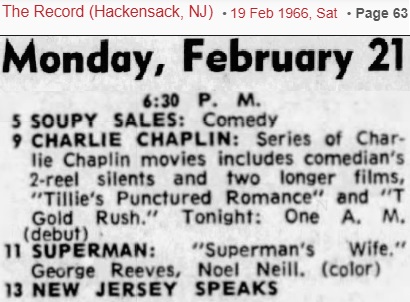
Well, I went through all the listings, and I guarantee you that the series never included The Gold Rush.
I don’t see how it could have.
Would Professor van de Kamp have loaned his print? Maybe.
Would James Dukas have loaned his print? Maybe?
Would MoMA have loaned its print? I can’t imagine that would have been allowed.
Did an agreement with Rohauer fall through?
Who would have done the music?
This listing shows us that a broadcast of The Gold Rush was indeed planned, but it never happened.
|
|
The bookings were all by nonprofit societies and noncommercial venues.
One print came from Professor Peter van de Kamp and the other print likely came from John Griggs.
Did James Dukas loan out his print? I doubt it. Was there a third print? A fourth print? I doubt it.
Similar showings continued for several years.
This is most likely how we explain the showings
at the SUB Ballroom on 19 November 1966 and
at the First Methodist Church on 29 December 1969 and
at the SUB Union Theatre on 9 April 1970 and
at the Albuquerque Civic Auditorium on 21 April 1970.
They all probably used the same print, and it most likely was Rohauer’s edition or Griggs’s edition.
Okay, it seems that the mystery is solved, so can we go home now?
No, we can’t go home yet.
|
After writing the above, I make another discovery.
In their introduction to the 1925 version (included on the Criterion Blu-ray),
Kevin Brownlow and David Gill wrote:
“The 1925 version disappeared but a 35mm copy had been made by a private collector.”
They referred, of course, to Rohauer’s reconstruction, not to a copy of the original edition.
Where did Kevin and David find this pirated edition?
At the Deutsches Institut für Filmkunde in Wiesbaden, as David Gill explained in Griffithiana.
The DIF had two battered composite
Atlas Film release prints that the German courts had seized as contraband in 1962,
during Charlie’s legal case against Rohauer.
|
Killiam’s 16mm TV edition was pirated from Rohauer’s edition,
but his 35mm
hodge-podge from 1971 was only partly taken from Rohauer’s edition.
|
|
Paul Killiam and his Killiam Shows, Inc., brought The Gold Rush back, commercially, and this time on television.
The Gold Rush had its alleged “world television première” on
Friday, 22 May 1970, on WTOP Channel 9 in Washington, DC:
|
Bruce Lawton told the story of Paul Killiam’s editions of The Gold Rush:
|
|
As one of the late Paul Killiam’s right-hand men — I can shed some light on the
history of the “Killiam” GOLD RUSH.
Paul was gearing up for THE SILENT YEARS around 1969/1970 for Public
Television. Color was a relatively new addition to TV and WNET wanted to play
it up for all that it was worth. When they found out that some of the silent
films that Paul would be providing were tinted — they then wanted ALL of them
tinted — regardless of whether they should be or not.
Another consideration was having a Charlie Chaplin film to open the series. THE
GOLD RUSH (with its unchecked PD status at the time) was the obvious choice.
Paul actually commandeered a go-between (who will remain nameless) to snag a
Rohauer 35mm print between bookings — have it sent to his NYC lab — and have a
“tinted” 16mm negative made. William Perry’s lovely score was married to this
“new edition” and it was premiered on THE SILENT YEARS with Orson Welles
hosting.
About a year or so later — Paul got many inquiries to rent THE GOLD RUSH in
35mm for screenings. As he had only produced a 16mm negative — he would need a
35mm negative to make prints to satisfy these requests. He went to his inside
source again to once again obtain access to the Rohaeur 35mm print between
bookings. However, when the material arrived it was clear that a lot of the
print had been mangled and was beyond copying. Paul was undeterred though and
did three things 1) copy what he could of this material, 2) got his hands on a
print of the ’42 version and filled out what he needed and 3) resorted to going
back to a 16mm print of his tinted edition and blowing it up to 35mm to fill
out the rest. The resulting 35mm negative was done in black & white.
So the tinted 16mm and black & white 35mm Killiam editions of THE GOLD RUSH
actually have differences between themselves(!). The 35mm is actually a bastard
child (of probably several bastard children) and Perry’s score had to be
“fitted” to the new 35mm edition.
The tinted 16mm edition was released on VHS and laserdisc through Republic. The
black & white 35mm edition was released only on laserdisc through Voyager.
Hope this saga clears up some questions and misconceptions.
|
As you see above, Bruce mentioned “The Silent Years.”
That series began after the WTOP/9 broadcast.
For whatever reason, for “The Silent Years” and for the film prints,
Killiam ditched the Wurlitzer score and replaced it with a piano score by
William P. Perry.
This “NEW SOUND VERSION” bore a copyright date of 1970 in the name of Killiam Shows.
In June 1974,
Blackhawk Films made this Killiam edition available to home collectors in mute 8mm,
but would not ship the prints outside the US.
|
|
At 90'/min, Killiam’s edition runs 82 minutes,
and in 35mm terms that would be about 7,380', give or take.
Charlie’s silent edition, despite everything you have heard and read, was 9,760'.
Everywhere you turn, you encounter stories that his première at Grauman’s Egyptian was very long,
that the version he showed at the Mark-Strand was a reel shorter,
that the print he sent to the Copyright Office was shorter yet,
and that the edition sent out as general release was even shorter.
Rubbish.
It was 9,760' or something very close to that,
and I find no evidence that Charlie altered anything in response to the première.
Lita Grey said he chopped out a reel’s worth after the preview,
but she was clearly mixing up some memories, as we all do.
It was ten reels and it remained ten reels until Charlie revised it in 1942.
|
Killiam then began a TV series called
The Silent Years, hosted by Orson Welles.
It premièred on WNET Channel 13 in NYC on
Tuesday evening, 6 July 1971.
The first episode was The Gold Rush and, once again, it was tinted,
but this time it had Bill Perry’s piano score rather than the Wurlitzer.
Thanks to the kindness of Bruce Lawton,
I have beautiful copies of both the b&w 1970 version as well as the 1971 tinted edition, both with Perry’s score.
Sadly, they are minus Orson’s intro and outro.
The intro is
here, in a very faded print, run on a telecine with a mistimed shutter.
The outro is
here, a very faded print run on a 16mm projector with an old video camera pointed at the screen.
The quality is horrible, but, hey, at least we finally get to see it!
The series soon enough traveled to other PBS stations across the country.
The timing was odd, because, coincidentally, Charlie himself would reissue the 1942 version in the US not too long afterwards,
sometime in early 1972 (impossible to determine the date, since it did not follow a standard release pattern).
So Killiam’s 1970 edition and Charlie’s 1942 edition were competing against one another.
Viewers who have seen both editions seem to be almost unanimous in concluding
that Charlie’s 1942 version is terribly inferior to Killiam’s 1970 version.
I know of no one who prefers the 1942 version to the 1970 version.
|
|
Now, I saw the 1970 Killiam edition several times.
When it played at the Capitol Theatre in Rome, NY, sometime around 2002, I clambered my way up to the booth and took a brief look at the print.
Actually, I watched it right inside the projector as it was being projected onto the screen.
The print was a mess.
Parts were optically reduced to 1:1.375 while other parts had the left side lopped off.
I could stay only for a couple of minutes.
I began my drive home just after the movie began, and so I cannot say more.
|
Charlie began adding music scores to his silent films.
In 1942, of course, he added music to The Gold Rush.
In 1959, he added music to a new compilation called The Chaplin Revue, which consisted of a trio, A Dog’s Life, Shoulder Arms, and The Pilgrim.
In 1969, he added music to The Circus.
All three of those features were issued by United Artists.
Then along came Oliver A. Unger, former employee of Jack Hoffberg, who was now with
Leisure Media, Inc.
He tried to persuade Charlie to score and issue more of his movies, but Charlie was bored with the idea.
Then appeared on the scene a certain
Mo Rothman, fast-talking hustler who had worked at Columbia Pictures and then moved on to BBS and Black, Inc.
Mighty Mo The Bandit smelled a bundle in this product, rounded up financing from a consortium of Swiss investors,
handed Charlie $5,000,000, and thus convinced him to write more music for more movies.
Done deal.
In 1971, Charlie added music to The Kid and The Idle Class, released as a pair.
In 1972, he added music to Pay Day and paired it with The Gold Rush.
In 1975, he added music to A Day’s Pleasure and paired it with The Circus.
Finally, in 1977, he added music to Sunnyside and A Woman of Paris, released posthumously as a pair.
In all of those projects, Charlie was at the mercy of the technology of the time.
Some movies he had to speed up too much, and others he had to slow down too much (by stretch printing).
Mighty Mo The Bandit released these films through
Columbia Pictures.
Then Oliver Unger arranged to have them transferred to something called
Classic Festival Corporation.
In the meantime, Mighty Mo The Bandit founded his own company, RBC (Rothman/Black, Inc./Childs),
which took over the noncommercial contracts for that whole bundle of films.
|
It must have been in the early 1990’s that
David Shepard gained access to the Chaplin archives
and received authorization to issue laserdiscs and then DVD’s of the films.
David had access to more modern and much superior technology, and so, in his infinite mercy, he was able to adjust the speeds properly,
except, of course, for The Gold Rush, because the narration and sound effects locked the film to 24fps.
Since David Shepard was David Shepard, he went the extra mile.
He reinserted segments that Charlie had deleted for the reissues of some of the movies,
and, for the 1942 edition of The Gold Rush, he improved the image by not lopping off the left side.
As he wrote on the back cover:
“Extraordinary quality achieved from digital mastering of a full aperture negative in the Chaplin archives.”
Note his wording.
Had he pulled the image from the original camera negative, he would have said, “digital mastering of the full-aperture negative.”
That is not what he said.
He said “digital mastering of a full aperture negative.”
The negative in question was surely incomplete and it was a duplicate negative, not a camera negative.
It was almost certainly the same duplicate negative made by a collector (Rohauer?) lo those many years before.
When David’s license to the materials expired, the Chaplin estate had his editions taken off the market
and replaced them with the standard reissue versions from the 1940’s through the 1970’s.
So, David’s lovely work was all for naught, and now the films were again either too fast or too slow,
the segments that Charlie deleted from the reissues were now deleted all over again,
and the left side went missing from The Gold Rush all over again.
These standard editions were licensed to Warner/MK2 video for DVD release, and, so that The Gold Rush would fit a standard TV screen,
the top and bottom were lopped off as well.
Exasperating.
Warner/MK2 also cropped City Lights the same way. Aaarrrggghhh!!!
I have nothing against the reissue versions, but not at the expense of losing access to the original versions,
and I certainly object to cropping, which is inexcusable.
Someday, someday, someday, as I have been promising myself for decades,
someday I am going to compare the 1970 Killiam video of The Gold Rush with the
David Shepard video and with the Warner video to see precisely what all the differences are.
|
|
The best thing about the Warner/MK2 box set was the inclusion
of a reconstruction of the 1925 version of The Gold Rush, or so it would seem.
Where did that come from? It came from some of David’s buddies!
|
In 1993, at about the same time that David was using a full-aperture silent negative on The Gold Rush for laserdisc release,
David Gill was also working on The Gold Rush in an attempt to restore the 1925 version.
He did this will the full blessings and coöperation of the Chaplin estate.
Gill, too, ran up against a wall when trying to restore the 1925 version of the movie.
He could never find a complete authentic copy.
He did what he could to reconstruct the original,
but what he ended up doing was creating essentially Killiam’s 1970 version all over again.
Also,
a few parts of the 1925 version no longer existed except in left-side-lopped-off dupes (but what about the MoMA materials?).
That tells me that the copy made by that anonymous collector (Rohauer?) in ages past was no longer complete.
Either it was badly damaged or it had begun to disintegrate.
If you watch the Gill reconstruction on the Warner box set, you will see that the image occasionally gets narrower.
The 1993 edition was copied exclusively from duplicates, as it appears that the camera negatives have all vanished forever.
Warner/MK2 video licensed the DVD rights to this reconstruction, slowed it down to, I think, about 83'/min,
and hired Neil Brand to perform a piano arrangement of the original 1925 score.
If you can get that video, especially in PAL, get it.
(The NTSC edition released in the US was a conversion filled with annoying artifacts.)
|
|
Kevin Brownlow, who worked closely with David Gill, in The Search for Charlie Chaplin includes an endnote, number 28,
in response to Rohauer’s tale of how he created his 1954 version of The Gold Rush.
I do not know how to interpret this:
“Most experts feel Rohauer was fabricating this story about restoring The Gold Rush.
David Gill actually did restore the silent version and on comparing sections of the domestic release with the Rohauer version
found them identical.”
Where on earth did David Gill find sections of the 1925 domestic release?
How on earth did David Gill find sections of the 1925 domestic release?
I’m totally confused.
Did he find fragments of original nitrate release prints with 1925 edge coding?
Also, if Charlie really did destroy Rohauer’s 1954 version, then where did David Gill find a copy?
So much of this story is missing.
My best guess is that David Gill never found an authentic edition
and probably did not know that the MoMA edition was directly from Charlie.
The authentic domestic release that David thought he had found were probably Rohauer’s print,
and so of course Rohauer’s edition would match Rohauer’s edition.
|
.jpg)
The above frame grab is stolen from
DVDBeaver.com.
The Gill reconstruction includes some unavoidable errors,
including this odd moment when the film ran off the sprocket teeth in the printer
during the creation of the duplicate negative lo those many decades ago.
Apparently, the “private collector” (Rohauer?) did a rush job.
|
When the Warner/MK2 license expired, the Chaplin estate licensed DVD and Blu-ray rights to Criterion.
The music score for the Criterion edition is Chaplin’s 1942 score,
but rearranged to fit the different editing and length.
The Criterion folks transferred the silent version at 90'/min (24fps), unfortunately.
The Criterion edition is thus seven and a half minutes shorter than the Warner/MK2 edition, and the difference is due only to the speed.
Even at 83'/min, the film races, which was Charlie’s deliberate intention.
The Criterion edition is five minutes longer than the Killiam edition but 21 minutes shorter than the edition shown in 1925.
My collection of Limelight newsletters is in storage, and so I am forced to rely upon my memory.
My memory is that when an orchestra (in the 1990’s, I think) attempted to play the 1925 score with the film at 24fps, or 90'/min,
the musicians simply could not keep up with the movie.
When they ordered the projectionist to slow the movie down to 20fps, or 75'/min, they were able to keep up.
Of course, they were playing the 1925 score to a print built largely of re-edited outtakes,
pieced together by those who had never worked on the original.
So of course the timing wouldn’t match!
|
When you watch the Criterion edition, you will notice that, every once in a while, to prevent the left side of the image from going black,
there is a zoom to eliminate three or even all four edges of the frame.
(Click here and pay especial attention to 23:23 through 23:39.)
My opinion: I would much prefer to have the left side go black, or even reveal the optical track.
Having the left side missing bothers me much less than having all four sides missing,
and a black stripe or a visible optical track bothers me much less than digital zooms that were never in the original.
|
|
Criterion ported its hi-def scans back to 35mm,
performing infinite amounts of needed digital cleanup along the way.
As for the 1942 edition also included on that Criterion disc, it is needlessly cropped to Academy,
and so it is not only the left side that is missing, but the top and bottom as well. Why?
Inexcusable.
|
The 1993 Gill reconstruction is the only edition of this movie that I ever enjoyed.
I saw Criterion’s 35mm print of it on the big screen with a nearly full house (500 seats) and there was roaring laughter,
something I had never before heard with The Gold Rush.
Previous screenings I had attended, of both the 1942 and 1970 editions, got few if any laughs — one or two mild chuckles at most.
The 1942 Charlie revision and the 1970 Killiam edition I found quite irritating and unsatisfying — and, worst of all,
unfunny.
The 1993 edition is a jewel.
What is the difference?
The speed and the musical accompaniment.
I don’t think there’s any other significant difference.
|
The 1970 Killiam edition was a steady source of irritation to the Chaplin estate, who attempted to do something about it.
The estate repeatedly filed charges and the case was eventually resolved in the Chaplin estate’s favor
by reference to an unpublished stage play that Charlie had used as the film’s basis (The Lucky Strike: A Play in Two Scenes).
There were also some other technicalities that are briefly mentioned
here and
here.
The underlying copyright won’t expire, I think, until 2047 under the current Berne Convention,
though I think it expired (again) in the US in 2021.
The result is that the 1970 Killiam edition was forced off the market, at least for a few years.
I have not read the case, and until I do so, I shall not be able to judge, but from what I know so far,
the verdict seems awfully strange to me, even ludicrous.
Using that legal logic, almost anything in the public domain could be legally be considered under copyright again,
including works that authors quite intentionally did not renew and did not even wish to protect. Very odd.
|
|
The only known surviving copy of the original 1925 version of the movie is (was?)
a 16mm print that Charlie gave to Billy Gilbert in 1939.
If you can find that print, I would pay you to let me watch it.
Of course, if the MoMA edition survives somewhere, then that would be complete and authentic as well.
|
Text: Copyright © 2019–2021, 2024 Ranjit Sandhu.
Images: Various copyrights, but reproduction here should qualify as fair use.
If you own any of these images, please contact me.
|
|
|
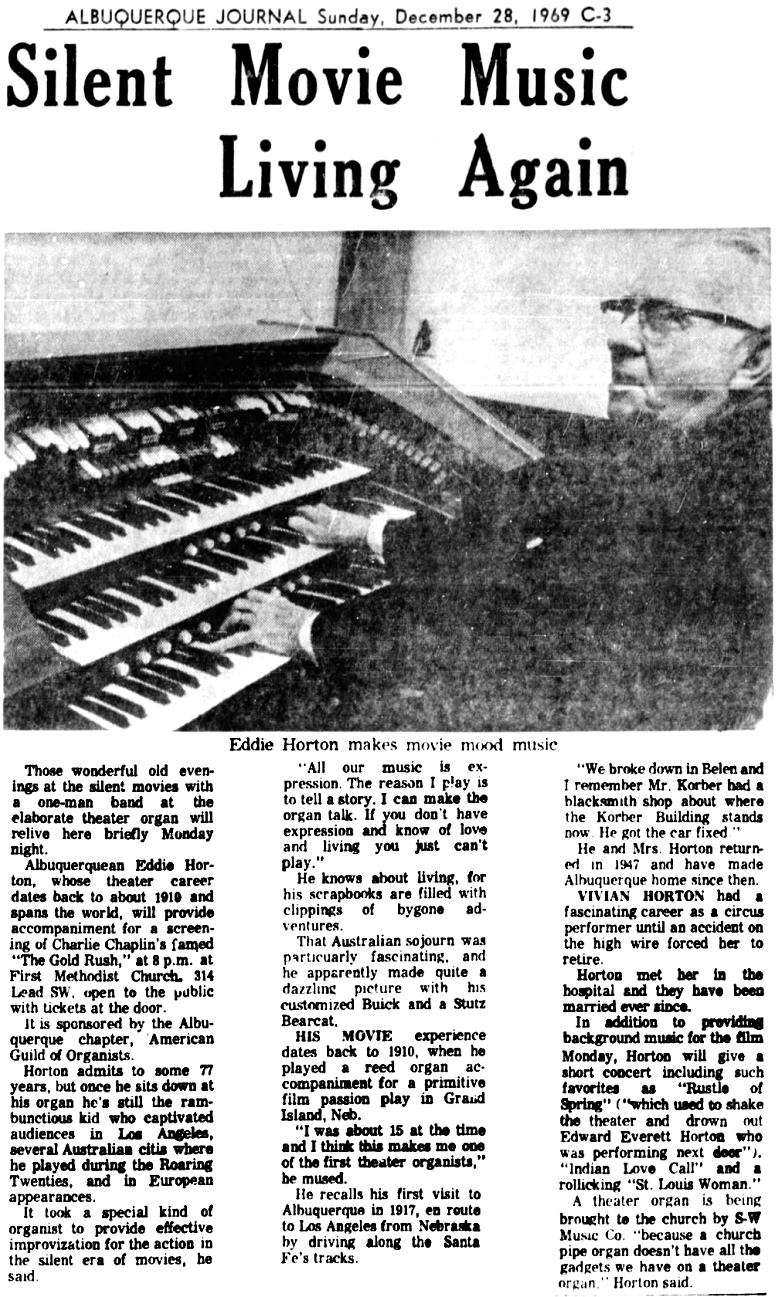
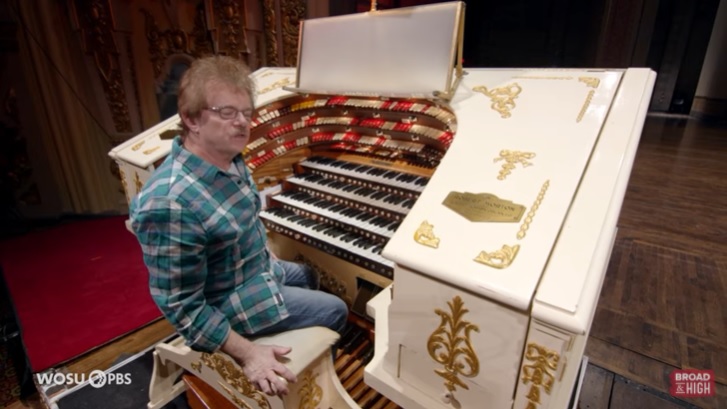
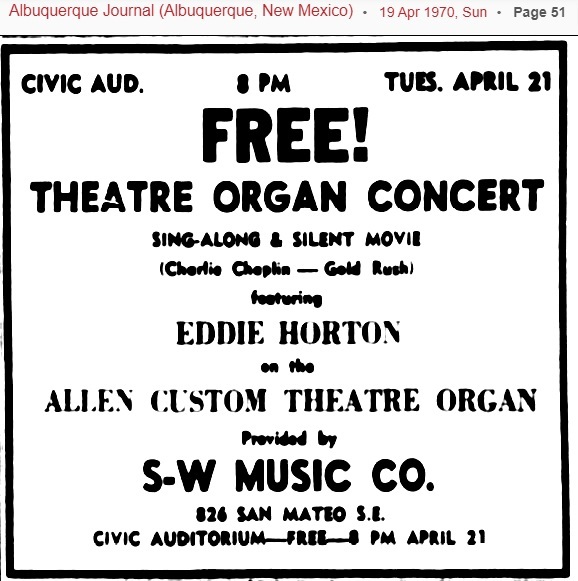

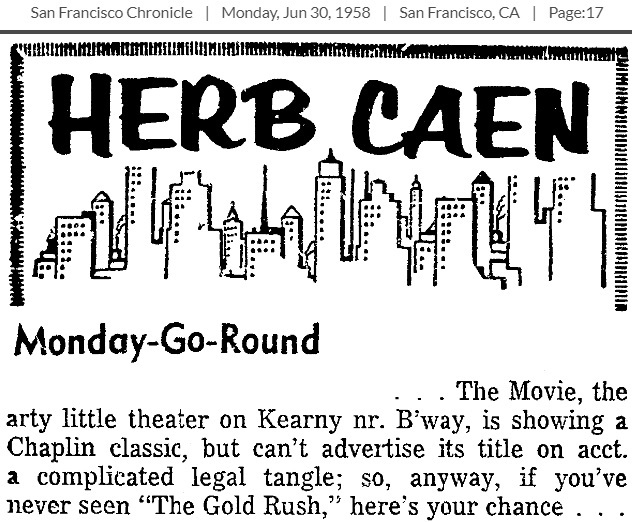
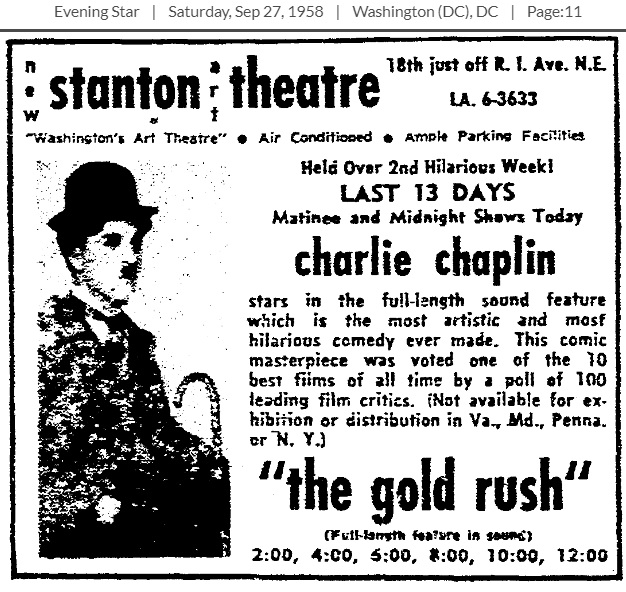

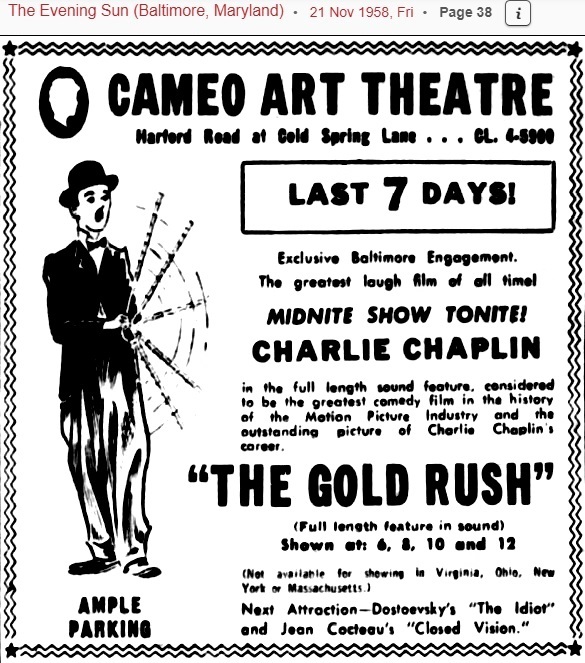
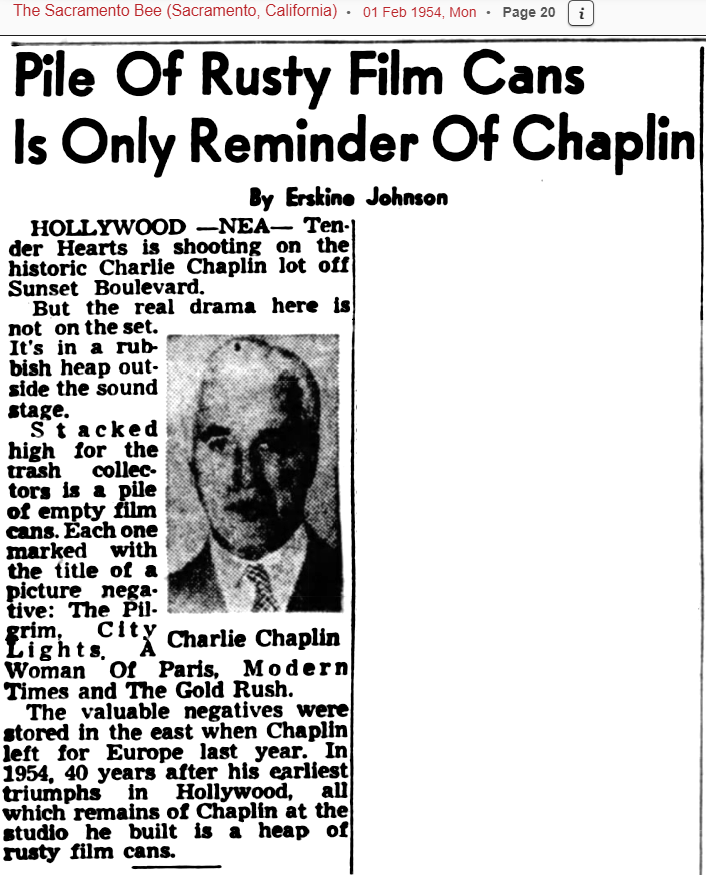

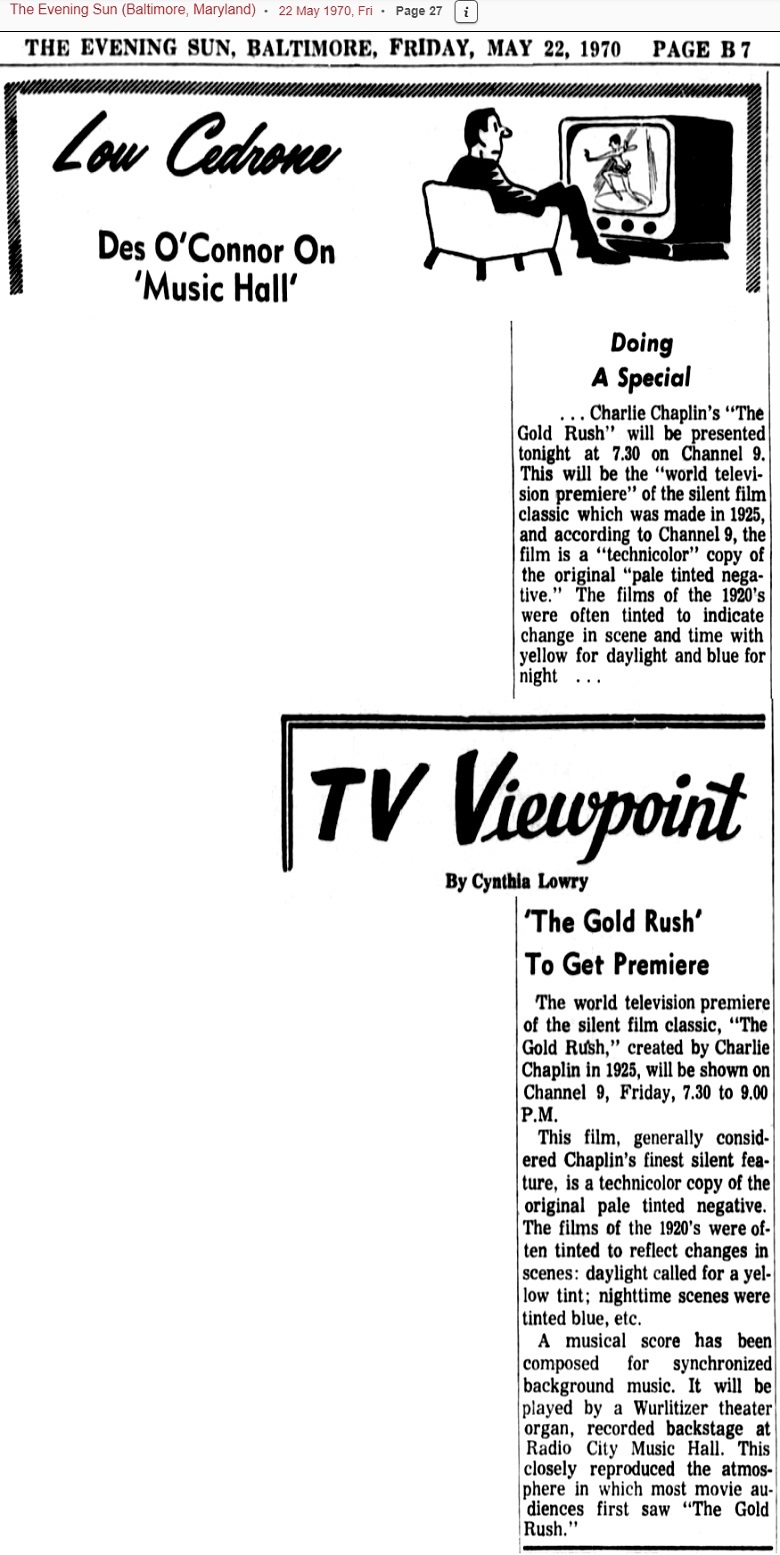
.jpg)